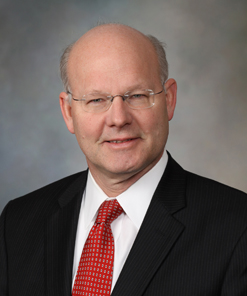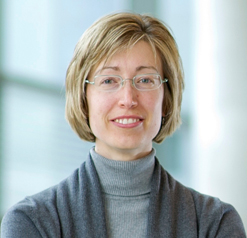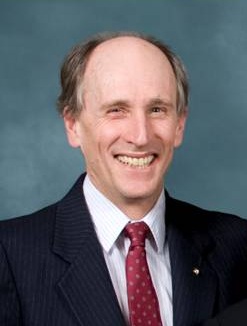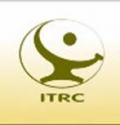"Emerging Methods for Measuring, Modeling and Instrumentation in Medical Applications"
Session Synopsis: Improving the measurement quality of physiological parameters is increasing in popularity. Various examples of such complex measurements are widely available such as blood pressure meters, glucose sensing, vital signs of fetus, and heart rate monitoring. On top of that medical imaging like PET, MRI and EEG-scans requires measuring physiological processes (e.g. blood-hemodynamic) for simulation and prediction purposes. To improve the quality of medical applications, innovative modifications are needed on different levels: instrumentation, measurement techniques, signal processing and modeling.
This special session invites articles that deal with innovative solutions to:
• measurement and modeling of physiological parameters and processes
• medical imaging
• uncertainty and traceability of medical measurements
• medical instrumentation and calibration techniques
• personal healthcare
• healthcare management
Organizers: Wendy Van Moer, Vrije Universiteit Brussel, Belgium; and Kurt Barbé, Vrije Universiteit Brussel, Belgium
Invited Speaker: Guy Nagels
"Measurement and instrumentation: engineering challenges in biomedical applications"
Abstract: Both clinical practice and biomedical research increasingly benefit from measurement and instrumentation technologies. In diagnostic applications, data acquisition through imaging techniques, electrophysiological measurements and biochemical sampling immediately come to mind. Diagnosis may in some cases also be supported by different machine learning techniques. Patient management sometimes necessitates instruments for drug delivery or electrical stimulation, both external and implanted. Less invasive technologies are also being used to enhance patient compliance with prescribed therapies, and both standard and dedicated computer platforms are being used in rehabilitation strategies. In biomedical research, several of these techniques return, and in addition more destructive protocols involving measurement and instrumentation can be applied. This presentation will aim to give a broad overview of problems faced by clinicians and biomedical scientists, for which engineers may provide measurement and instrumentation solutions in the future. Some examples of current applications will also be discussed.
When submitting your extended abstract for this special session, please identify that it is being submitted for “special session #2”. For more information about this special session please contact Wendy Van Moer.
"Microwave, Millimeter Wave, and Terahertz: Devices, Methods, Applications, and Measurements"
Session Synopsis: In the past decade, there has been a significant flurry of activity in the millimeter, sub-millimeter, and terahertz (THz) regions of the electromagnetic spectrum regarding device development, new measurement methods, and a wide range of novel applications. These regions in particular have received considerable attention by academicians, practioners, and those interested in advancing the technology of these up-and-coming areas. This session aims to provide a forum to showcase some of the state-of-the-art activities while bringing researchers with similar interests together.
Organizer: Dr. Kristen M. Donnell – Missouri University of Science and Technology (S&T), Rolla, MO, USA
Invited Speaker: Dr. Dylan Williams – National Institute of Standards and Technology (NIST, Boulder, CO, USA)
“On-Wafer Measurements at THz Frequencies”
Advances in semiconductor fabrication have pushed the development of the microwave wafer probes and vector network analyzers for transistor characterization at terahertz frequencies. Dr. Williams will discuss the synergy between advances in transistor technology and microwave metrology, the fundamental advances in transistor characterization over the last few years, and the challenges that await us.
For more information about submitting an abstract to this special session, please contact Dr. Kristen Donnell.
"Wireless Sensors Networks for Assisted Living"
Session Synopsis: Assisted Living is a hot area having an everyday increasing strategic relevance given its impact on the economy and on the society. In this sector, measurement systems and methodologies assume a role of primary importance. There is, in fact, an extremely vivid interest on this subject both in the scientific and in the industrial community. In spite of the numerous results available, there is still a large need for further research efforts and for novel solutions. In particular Wireless Sensors Networks hold the promise of being able to bring innovative contribution to this area being able to collect and transfer large sets of measurement data from several points thus realizing distributed and flexible measurement systems. We invite therefore original research papers on this subject with the goal to contribute to this area through a vibrant arena where novel ideas on converging subjects for the general topic of “Wireless Sensors Networks for Assisted Living” will be confronted and exchanged between prominent actors in this field.
Submission are welcomed on:
• Overview of state of the art on "WSN for assisted living"
• Measurement methodologies and algorithm for Wireless Sensors Networks
• Applications of Wireless Sensor Networks to the improvement of life quality of impaired people
• Smart wireless multi-sensor systems for assisted living
• Smart textile solutions for Body Sensor Networks
• Wireless Body Sensor Network
• Energy harvesting solutions for Wireless and Body Sensor Networks
Organizers: Salvatore Baglio, DIEEI – University of Catania, Italy; and Bruno Andò, DIEEI – University of Catania, Italy
Invited Speaker: Subhas Mukhopadhyay, Massey University, New Zealand
When submitting your extended abstract for this special session, please identify that it is being submitted for “special session #4”. For more information about this special session please contact Salvatore Baglio.
"Technology Transfer & Expert Panel Discussion"
Session Synopsis: Over the past few decades technology transfer of intellectual property (IP) to successful commercialization has become increasingly important in the research university environments. This is primarily due to increase in job creation and fostering local and regional economic development. University administrators and research sponsoring agencies view university technology transfer (from research laboratories to commercialization) as a significant source of income and an important research output metric, respectively. Commercial entities are keenly aware of the importance of this issue and highly sensitive to timely recognition and protection of their IP. However, not everyone involved in this process, including university academic faculty members, and graduate students, are aware of the importance of IP generation and protection. The purpose of this session is to familiarize the participants with not only the basic fundamentals of patent filing and execution, but also with common processes used in universities to protect such IP and its effective transfer to the marketplace through licensing agreements. Other important issues such as the governing laws will also be addressed in this session. Several “successful” and “unsuccessful” case studies highlighting the challenges, risks and rewards of Technology Transfer will be presented followed by a moderated “Expert Panel Discussion” engaging the participants in Q/A with the panel members.
Who should attend: University faculty members, graduate students, scientists and engineers from industry and governmental agencies, and anyone interested in this important topic.
Organizer: Professor Reza Zoughi – Missouri University of Science and Technology (S&T), Rolla, MO, USA
Invited Speakers:
Mr. Keith Strassner - Director of the Office of Technology and Economic Development at Missouri University of Science and Technology, Rolla, MO, USA
Mr. Strassner’s main responsibility is focused on expanding the economic footprint of the University through commercialization of the University’s Technology assets via licenses, partnerships and entrepreneurial activities, including development of Missouri S&T’s Innovation Park. He represents the University as a board member of the Rolla Regional Economic Commission (RREC) and on the Board of Directors of Missouri Enterprise. Prior to joining the University he served as Assistant Director for Alliances at Brewer Science, Inc. responsible for the identification and development of strategic alliances and partnerships leading to the creation new business opportunities. This included a key role in the formation of the Jordan Valley Innovation Center at Missouri State University (Springfield, MO) designed to commercialize University and Industrial technology. He also served as Brewer’s key liaison with Missouri’s Congressional offices and the Department of Defense contracting agencies. Prior to joining Brewer Science, he spent 16 years with Petrolite Corporation, a specialty chemical company based in St. Louis, MO and Tulsa, OK, holding a variety of technical, business development and marketing positions including Manager of New Business Development and R&D Director. Keith Strassner holds a Bachelor of Science in Chemistry from the Missouri University of Science and Technology (1979) and a Masters of Arts in Marketing from Webster University (1988).
John W. Sheets, Jr., Ph.D., Senior Vice President, Corporate Research, for Boston Scientific Corporation.
In this newly created position, John leads Boston Scientific’s research function. He has established a renewed strategic direction for product and technology research activities while acting as an agent for change within the broader development organization to help advance the Company’s Corporate Technology Plan and White Space Strategy.
Prior to joining Boston Scientific, John served as Corporate Vice President of Research and Development and Chief Technology Officer at Bausch & Lomb, leading the company’s global research and development function for its Vision Care, Pharmaceutical and Surgical business units. He directed efforts that led to 20 new product launches, which grew the company’s pipeline value by 140 percent.
Earlier, John was President and Chief Executive Officer of Hoya Surgical Optics, a global ophthalmic surgical business. He established Hoya’s global headquarters in the United States, which included identifying and hiring an executive team, creating a global brand and developing product positioning strategies. Prior to this role, John was Worldwide Vice President, Research and Development and Chief Technical Officer at Ethicon, a Johnson and Johnson company, where he established strategies for expansion in biosurgicals, ENT and plastic surgery. From these initiatives, he led the growth of Ethicon’s new product revenues by more than 25 percent.
During his tenure as Vice President, Surgical IOL and Therapeutics at Alcon Laboratories, he lead the establishment of the Acrysof IOL platform which commands over a 50% global market share. During his tenure, Alcon established itself as the market leader in surgical ophthalmology.
John earned Ph.D. and M.S. degrees in Materials Science and Engineering from the University of Florida, where he earlier earned a B.S. in Zoology. He has been recognized as the inventor on 12 U.S. patents involving ophthalmic, bariatric and general surgery products. He was recently elected as a Fellow of the American Institute for Medical and Biological Engineering.
"RF/Microwave Materials Characterization"
Session Synopsis: This session is a unique opportunity for scientists and engineers to present their latest research findings in the field of RF and microwave characterization of materials. Topics of interest for this session include, but are not limited to, measurement techniques, calibration methods, measurement uncertainties, modeling and parameters extraction, and applications.
Organizer: Dr. Samir Trabelsi – US Department of Agriculture, Athens, GA
Invited Speaker: Jan Obruzut - The National Institute of Standards and Technology (NIST)
For more information about submitting an abstract to this special session please contact Dr. Samir Trabelsi.
"Instrumentation and Measurement for Improving Quality, Reliability and Safety"
Session Synopsis: Nowadays, in many fields of application, it is mandatory to fulfil performance of Testing and Diagnostics, Reliability, Availability, Maintainability, Safety and Risk assessment. Such tasks are considered, in fact, as fundamental in different contexts of high-tech industry (e.g. biomedical, transportation, logistics, avionics) as well as for the environment, materials, plants, etc.
This Special Session represents an interesting opportunity for engineers and researchers who work in this area to meet about live issues. In particular, useful and beneficial discussion can be promote with the aim to provide an increasing of knowledge and an easier diffusion of the most recent developments.
Perspective authors can provide original contributions in this topic which can cover, but not only, the following aspects:
- Instrumentation and measurement methods for Testing and Diagnostics (Destructive and Non-destructive Testing, Condition Monitoring, Vibration monitoring, Built-in Test Equipment and Automatic Test Equipment, etc.)
- Design and implementation of laboratory tests (Reliability test, Environmental test, Burn-in test, quality tests, etc.) and Qualification tests for components, assemblies and process
- Measurements, methods and instrumentation for evaluation of Reliability, Availability, Maintainability and Safety (RAMS), improvement and assurance
- Impact of RAMS requirements in the emerging technologies for Life and Society, environment and new energy sources
- Effects of measurement uncertainty on the estimation of the RAMS parameters
- Risk assessment and management
- Reliability and Quality growth
- Standards definition and certification
Organizers: Marcantonio Catelani, University of Florence (Italy); Loredana Cristaldi, Politecnico of Milan (Italy); Massimo Lazzaroni, University of Milan (Italy); Lorenzo Peretto, Paola Rinaldi, University of Bologna (Italy); Ferdinanda Ponci, RWTH Aachen University (Germany); Andrea Fibbi, Stefano Rossin, Carmelo Accillaro, GE Oil & Gas (Italy); Enrico Simoni, Borri S.p.A. (Italy); and Giorgio Turconi, IEC TC 56 (Dependability) Member and Secretary of Italian TC 56 (Italy)
When submitting your extended abstract for this special session, please identify that it is being submitted for “special session #9”. For more information about this special session please contact Professor Marcantonio Catelani.
"Advanced Measurement and Data Processing for Engineering System Health Monitoring"
Session Synopsis: Engineering system health monitoring has attracted increasing attention in both academic and industrial communities. Dynamical changes of engineering systems have to be captured in time for safe and reliable operations. These tasks are typically realized by using measurement technologies in combination with data processing algorithms. Recent advances in the theory and methodology for measurement and data processing have provided viable tools to dealing with the issue of engineering system health monitoring. This invited session is seeking for papers on recent research and development on engineering system health monitoring with theoretical and/or applied nature. Suitable topics for this special session include but are not limited to:
• New measurement methodology for system health monitoring
• Wireless sensor networks
• Advanced time scale/frequency analysis
• Non-linear time series analysis
• Other-related topics.
Organizers: Dr. Ruqiang Yan, Southeast University, China; Dr. Xuefeng Chen, Xi’an Jiaotong University, China; Dr. Zhaoyan Fan, University of Connecticut, USA
Invited Speaker: Dr. Robert X. Gao – University of Connecticut, USA
“Advanced Measurement for Advanced Manufacturing: Challenges and Opportunities”
The rapid advancement in material science and technologies since the beginning of the 21st century, as represented by nano-materials, has stimulated new interests world-wide in advanced manufacturing. As the foundation for economic development and wealth production, manufacturing continues to play a pivotal role in the era of information technology. At the same time, the continued convergence of engineering science with information, communication, and miniaturization technologies has accelerated the long-standing research and development in measurement science, placing it at the verge of significant growth in the new global economy. Innovative sensing and signal processing methodologies have been continually invented and explored for improving the observability and controllability in manufacturing systems and process monitoring, diagnosis, and prognosis.
This invited talk summarizes recent advancement in measurement science and instrumentation for enhancing health monitoring and diagnosis of manufacturing equipment and processes. Methods for self-energized and wireless multivariate sensing are highlighted, and energy-efficient data acquisition and transmission methods are described. Such methods have potential applications in designing energy efficient wireless sensor networks for complex manufacturing systems. The talk highlight both challenges and opportunities in integrating sensing, multi-physics modeling, and embedded control for innovative applications in advanced manufacturing
For more information about submitting an abstract to this special session please contact Dr. Ruqiang Yan.

 Mr. Kevin E. Bennet is the Chairman of the Division of Engineering of the Mayo Clinic of Rochester, Minnesota, Assistant Professor of Neurosurgery and co-Director of the Neural Engineering Laboratory of Neurologic Surgery. His division, composed of 64 technical staff, is responsible for the development and application of new technology for clinical practice and research. Major development efforts include deep brain stimulation, wireless physiological monitoring and minimally invasive surgery.
Mr. Kevin E. Bennet is the Chairman of the Division of Engineering of the Mayo Clinic of Rochester, Minnesota, Assistant Professor of Neurosurgery and co-Director of the Neural Engineering Laboratory of Neurologic Surgery. His division, composed of 64 technical staff, is responsible for the development and application of new technology for clinical practice and research. Major development efforts include deep brain stimulation, wireless physiological monitoring and minimally invasive surgery. Susan C. Hagness received the Ph.D. degree in electrical engineering from Northwestern University in 1998. Since August 1998, she has been with the Department of Electrical and Computer Engineering at the University of Wisconsin-Madison, where she currently holds the title of Philip D. Reed Professor. She is also a Faculty Affiliate of the Department of Biomedical Engineering and a member of the Imaging and Radiation Sciences Program within the UW Carbone Cancer Center.
Susan C. Hagness received the Ph.D. degree in electrical engineering from Northwestern University in 1998. Since August 1998, she has been with the Department of Electrical and Computer Engineering at the University of Wisconsin-Madison, where she currently holds the title of Philip D. Reed Professor. She is also a Faculty Affiliate of the Department of Biomedical Engineering and a member of the Imaging and Radiation Sciences Program within the UW Carbone Cancer Center.  Dylan F. Williams (M’80-SM’90-F'02) received a Ph.D. in Electrical Engineering from the University of California, Berkeley in 1986. He joined the Electromagnetic Fields Division of the National Institute of Standards and Technology in 1989.
Dylan F. Williams (M’80-SM’90-F'02) received a Ph.D. in Electrical Engineering from the University of California, Berkeley in 1986. He joined the Electromagnetic Fields Division of the National Institute of Standards and Technology in 1989.


